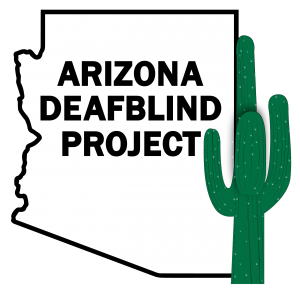ARIZONA DEAFBLIND PROJECT
Serving children and youth with combined vision and hearing loss from birth through age 21

What is Deafblindness?
Deafblindness … combined vision and hearing loss … dual sensory impairment …. co-occurring vision and hearing loss… All of these terms mean the same thing.
A deafblind child is a child who has a degree of loss in BOTH sight and hearing, the combination of which results in significant difficulties in accessing information – whether educational, environmental, or communication information. Most children who qualify as deafblind actually have some usable vision and/or some usable hearing (or some of both). For them however, neither the remaining vision nor remaining hearing can completely compensate for the loss or restriction of the other sense.
There is a wide range of cognitive and developmental ability among children who are deafblind. They can range from being gifted (like Helen Keller) to having profound levels of multiple impairments including cognitive, physical, social, or other health impairments. Children with combined vision and hearing loss can be born with one or both losses, or acquire them shortly after birth or even during childhood or teen years.
Deafblindness creates a disability of access to information. The impact isn’t like adding the vision and hearing losses together. Rather, these two losses are multiplicative (vision loss X hearing loss), and impact the child more intensely. Due to their combined vision and hearing losses, children with deafblindness miss a great deal of information: educational, environmental, communicative, social, and conceptual information. Children with combined losses receive information from the world and about the world through fewer senses than their sighted and hearing peers (taste, touch, smell, and limited vision and hearing).
Arizona Deafblind Project
Improving educational, social, and communication outcomes for children and youth who are deafblind
